Smith & Wesson has been buying up smaller companies that complement its own firearms product line. The latest acquisition is laser powerhouse Crimson Trace.
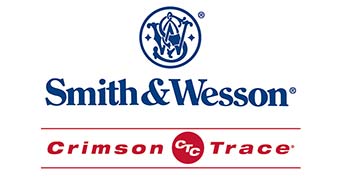
Richard Johnson is an American author, editor and entrepreneur.
A former police officer and trainer, he left public service and founded Tac6 Media, LLC.
Richard is a prolific writer with hundreds of articles related to firearms and law enforcement published by Harris Publications, Athlon Outdoors, NRA, Police & Security News, The Firearm Blog, Human Events and more.
He currently consults with clients who need online publication management, editorial services, content production and organic traffic acquisition through search engine optimization.

Smith & Wesson has been buying up smaller companies that complement its own firearms product line. The latest acquisition is laser powerhouse Crimson Trace.
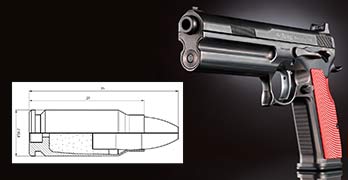
FK Brno introduced a new cartridge and pistol system a few months back, and some are calling it the fastest handgun cartridge made. But, is it really? Leaving out the handguns developed to fire traditional rifle cartridges, is the new cartridge/handgun combination the speediest on the market?
The new FK Brno cartridge is officially called the 7.5 FK. It is a bottleneck design that is not based on any existing cartridge cases, so don’t expect to make your own with existing brass.
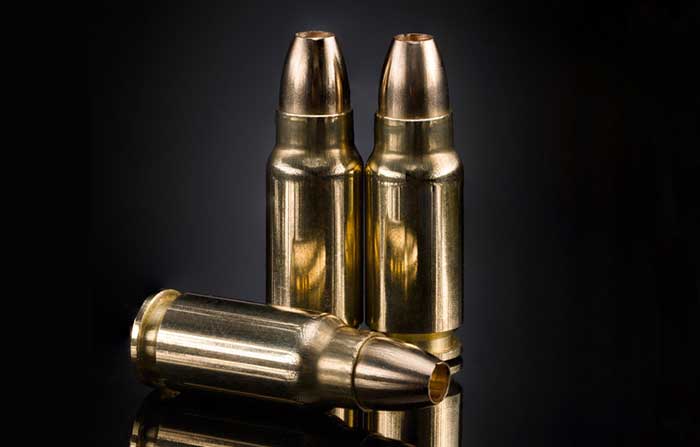
The 7.5 FK has a 7.8mm diameter bullet (roughly .30 caliber) with an overall cartridge length of 35mm. The case length is 27mm long.
As it was developed by FK Brno, a company located in the Czech Republic, the cartridge was standardized under Commission Internationale Permanente pour L’preuve des Armes Feu Portatives, or C.I.P. for short. This commission tests small arms and ammunition and sets certain safety standards. Although not a perfect comparison, C.I.P. is similar to the Sporting Arms and Ammunition Manufacturers’ Institute (SAAMI) in the United States.
According to FK Brno, the design of the 7.5 FK began in 2010 when the company was approached by a customer that wanted a system to bridge the gap between existing handgun and rifle performance. Although the company does not identify this client, it appears that the cartridge was intended for military use.
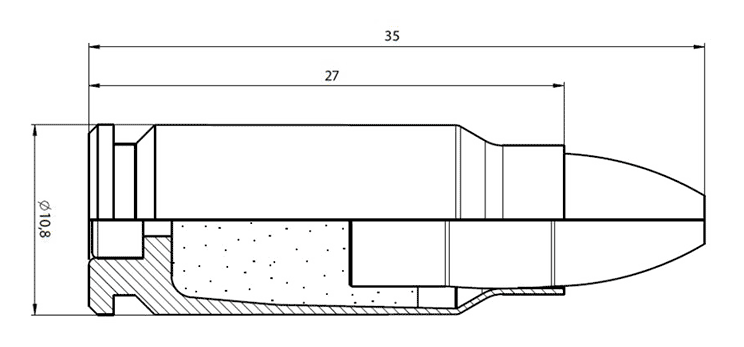
Development parameters included:
Ultimately, the client did not pursue the design, but the company continued its development for the commercial market.
In the company’s advertising, FK Brno states the new round has a muzzle velocity of 2,000 fps with a 100 grain bullet. Without reservation, that is impressive from a duty sized handgun.
But, is it really the fastest? Let’s take a look at some currently manufactured handgun ammunition.
One of the obvious cartridges to check is the 5.7x28mm developed by FN Herstal. FN developed the round to be fired from both handguns and PDWs – a mission that is similar to the original design inspiration for the 7.5 FK cartridge. Although I’ve seen 5.7×28 ammunition rated at velocities in excess of 2,000 fps, I’ve never come close to those numbers from a handgun.
For example, the SS197 SR round with the 40 grain Hornady V-MAX bullet only measures an average of 1,683 fps across my chronograph when fired from the company’s Five seveN pistol. Likewise, the American Eagle 40 grain TMJ load from Federal averages 1,638 fps across my chrony. Military loads may do better, but I’d say the 7.5 FK is likely faster.
Interestingly, the oft-maligned 9mm is capable of more than 2,000 fps from normal handguns. I’ve extensively tested the Civil Defense line of ammo from Liberty Ammunition. With a 50-grain hollowpoint bullet, I measured 5-shot average velocities in excess of 2,000 fps with a range of pistols:
While Liberty Ammunition might be a niche load company, I daresay the 7.5 FK is a niche caliber so I believe the comparison is fair. Of course, the 7.5 FK is very impressive as its driving a bullet that is double the weight of the one used in the Liberty Ammunition round to roughly the same speeds.
Of course, one could also argue that obsolete cartridges like the .357 Maximum and .475 Wildey Magnum could also surpass 2,000 fps by loading a lighter bullet. In fact, both of those cartridges would likely blow past the 2,000 fps threshold with a 100 grain (or heavier) bullet.
This monster cartridge has loads from Hornady and Winchester that are rated at or above 2,000 fps. Smaller ammo manufacturers may have a few more. However, I am unaware of any semi-automatic pistol chambered in .460 Magnum.
If any handgun caliber deserves the “fastest” label, it might be the .221 Fireball. Developed for use in a bolt action handgun, the .221 Fireball threw lead in excess of 2,500 fps. Although the original Remington x100 is no longer made, ammo is still available from Remington, Nosler and others.
Currently manufactured loads are rated at up to 3,200 fps. I suspect that those numbers may be from a rifle length barrel, but even so, I would expect handgun length barrels to well exceed 2,000 fps.
Of course even the Fireball can’t touch the theoretical 25,000 fps claimed in a patent application from Smith & Wesson. Even assuming that was a typo (read the article), a 2,500 fps revolver cartridge is nothing to sneeze at.
So, is the new 7.5 FK the “fastest” handgun cartridge. Strictly speaking, no. However, speed is only part of the equation. I wouldn’t classify the .221 Fireball or .460 S&W Magnum as self-defense or combat cartridges in a normal context – something the 7.5 FK appears to have been designed for.
While Liberty Ammunition is able to push the 9mm beyond 2,000 fps, the 7.5 FK is designed from the ground up to do that. Who knows what limits others could push the 7.5 FK to?
Bullet energy is another thing we can measure in an effort to predict the usefulness of a given cartridge. While I do not think bullet energy equals “stopping power,” I do believe energy plays a role in the terminal effectiveness of a round. Energy levels are also used by some hunters as a rule of thumb when deciding what cartridges may be suitable for what kinds of game.
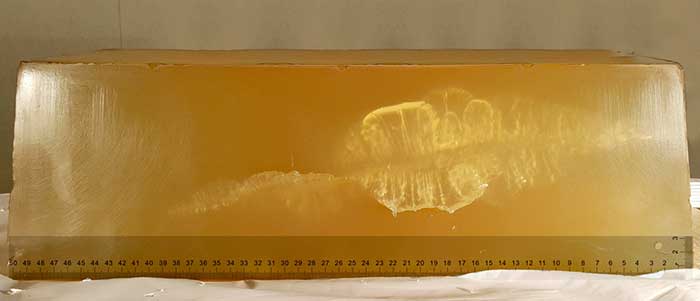
A 100 grain bullet moving at 2,000 fps generates about 888 ft-lbs of energy. That is extremely impressive from a handgun. So, how does that compare the the above mentioned cartridges?
| Bullet Weight | Velocity | Energy | |
|---|---|---|---|
| 7.5 FK | 100 gr | 2,000 fps | 888 ft-lbs |
| 5.7×28 (FN SS197 SR) | 40 gr | 1,683* fps | 252 ft-lbs |
| 9mm (Liberty Defense) | 50 gr | 2,025* fps | 455 ft-lbs |
| .460 S&W Magnum (Hornady Custom FTX) | 200 gr | 2,200 fps | 2,150 ft-lbs |
| .221 Fireball (Nosler Custom Ballistic Tip Varmint) | 40 gr | 3,200 fps | 910 ft-lbs |
Compared to the 5.7×28 and 9mm loads, the 7.5 FK generates significantly more energy. If the felt recoil is that of a .45 ACP +P, then that might be a good trade off for many people.
What is also impressive about this cartridge is that at 100 meters, the bullet is still able to deliver more than 500 ft-lbs of energy.
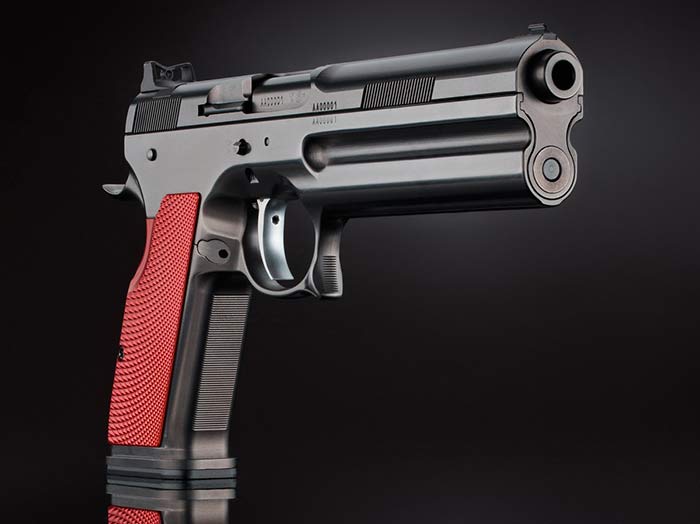
Ok, so FK Brno has an interesting little cartridge, but its all for naught if there isn’t a reliable gun from which to shoot them. Enter the 7.5 FK Field pistol.
The pistol is a single action handgun that uses a tilting barrel and holds 14 rounds in the magazine. It has a 6″ barrel and weighs just under three pounds. The rear sight is designed to be easily replaced by a Trijicon RMR sight.
According to FK Brno, the new 7.5 FK Field pistol is an entirely new design with a special recoil attenuation system that has been patented by the company.
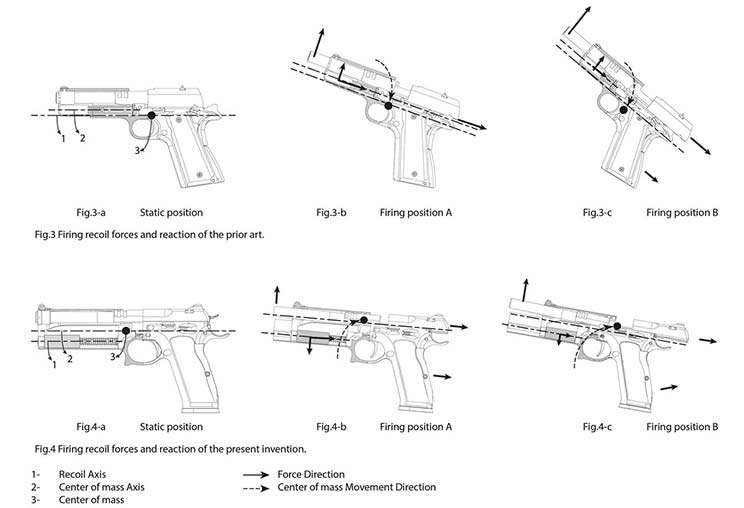
The company has not offered specific details on how the system works, but has provided the graphic above comparing a standard recoil system with their new system.
Right now, the 7.5 FK pistols are not being imported into the United States. However, American Rifleman reported that the company was in negotiations with a Florida-based importer to bring the guns into the country. There are several importers here in Florida, but two large ones immediately jump to mind: Century Arms and EAA Corp.
Of course, all of this is pending BATFE import approval.
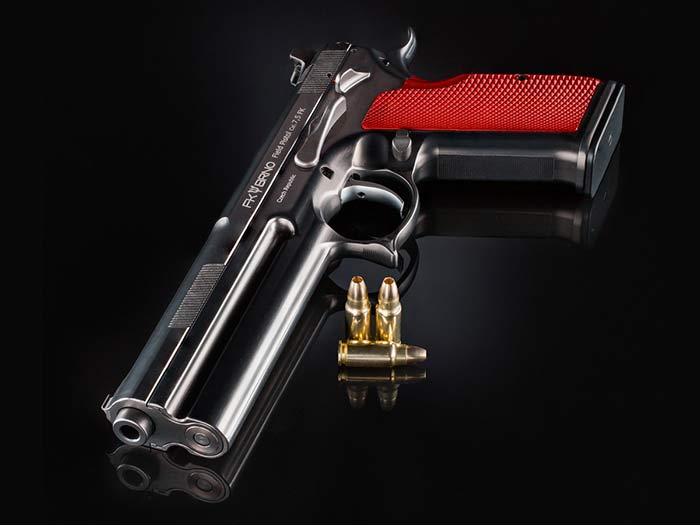
The real problem for this gun and cartridge is the rumored price. According to an article in the American Rifleman, the gun “…could be well north of $5,000.” If that is so, I do not expect many of these guns to sell.
Last Update: October 17, 2022

Earlier today, the Federal Bureau of Investigation awarded a contract to Glock for new 9mm duty pistols. The new contract has a potential value of $85 million over 10 years.
The FBI amplified a conversation regarding the relative effectiveness of different handgun cartridges when its training division published a paper in 2014 justifying the use of the 9mm cartridge for law enforcement use. A year later, the agency published a request for proposal (RFP) for new 9mm duty pistols.

CMMG announced a new mid sized AR style rifle that is designed for larger diameter cartridges. Called the MkW Anvil, CMMG custom designed this gun to use the strength offered by AR-10 components, but with an eye to keeping the platform close to the AR-15 compatibility originally envisioned for the .458 SOCOM cartridge.
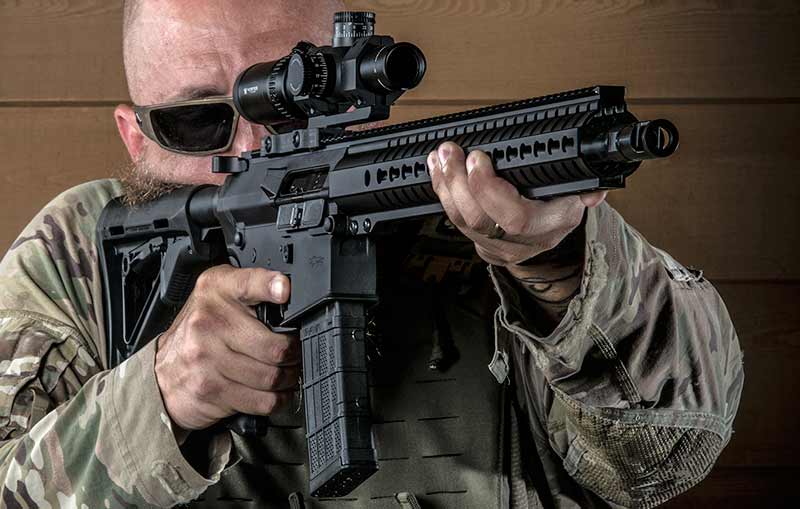

Sturm, Ruger & Co. announced the addition of a new rifle to the 10/22 line: the 10/22 Takedown Lite. The new rifle combines the features of the company’s existing take down rimfire rifle with the company’s modular stock and a lighter weight barrel assembly.